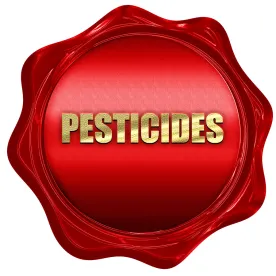On April 23, 2018, the California Department of Pesticide Regulation (DPR) circulated a presentation entitled “Top 10 Agricultural Pesticide Use Violations of 2017” that identifies the top ten agricultural most common pesticide use violations of 2017 in California. The violations are listed from the least common (#10) to the most common (#1):
10. Handler Training, regulated under Title 3 of the California Code of Regulations (C.C.R.) § 6724 (b-e). Examples of handler training violations listed in the presentation are: not updating employee training on a new pesticide handled; and not training employees prior to them mixing, loading, or applying pesticides.
9. Availability of Labeling, regulated under 3 C.C.R. § 6602. Examples of labeling availability violations listed in the presentation are: not having relevant Special Local Needs (SLN) labeling at the site when mixing, loading, or applying; and not having the labeling booklet on-site when mixing, loading, or applying.
8. Handler Decontamination Facilities, regulated under 3 C.C.R. § 6734. Examples of these types of violations listed in the presentation are: a handler using a backpack sprayer and not carrying a pint of eyewash when the label requires eye protection; and handlers using hand sanitizer instead of soap and water.
7. Service Container Labeling, regulated under 3 C.C.R. § 6678. Examples of service container labeling violations listed in the presentation are: not including the signal word on a service container label; and only putting the name of the pesticide on the service container.
6. Hazard Communication for Fieldworkers, regulated under 3 C.C.R. § 6761. Examples of these types of violations listed in the presentation are: not completing the required fields on the displayed Pesticide Safety Information Series (PSIS) A-9 leaflet; and not providing Safety Data Sheets (SDS) for the pesticides listed on the pesticide use records.
5. Annual Registration with County Agricultural Commissioner by Anyone Who Intends to Advertise, Solicit, or Operate as a Pest Control Business in California, regulated under California Food and Agriculture Code (FAC) § 11732. An example of a violation is not registering with the county in which such a business intends to work prior to performing pest control activities.
4. Application-Specific Information (ASI) for Fieldworkers, regulated under 3 C.C.R. § 6761.1. Examples of violations listed in the presentation are: not including the start and stop times, Restricted Entry Interval (REI), or active ingredient in the displayed information; and not displaying the ASI before fieldworkers work in a treated field.
3. Emergency Medical Care Requirements, regulated under 3 C.C.R. § 6726. Examples of violations listed in the presentation are: not taking employees suspected of a pesticide illness to the doctor immediately; and not posting the name, address, and phone number of the medical facility at the worksite or in the work vehicle before employees begin handling pesticides.
2. Personal Protective Equipment (PPE) Requirements, regulated under 3 C.C.R. § 6738. Examples of violations listed in the presentation are: storing PPE in the same place pesticides are stored; and not cleaning PPE and checking for wear after each use.
1. Labeling and Permit Condition Compliance, regulated under FAC § 12973. Examples of violations listed in the presentation are: not following label-required buffer zone, set back distance, or vegetative buffer strip requirements; and applying a pesticide to a site or crop not listed on the labeling.
DPR states that it “recommends and encourages continuing education (CE) course sponsors [to] integrate this information into … future CE courses,” and asks for help “in promoting lawful pesticide use practices by encouraging [CE] attendees to review these agricultural pesticide use violations as they relate to their operations, to assure they are in compliance with federal and California pesticide use requirements.”



 />i
/>i

